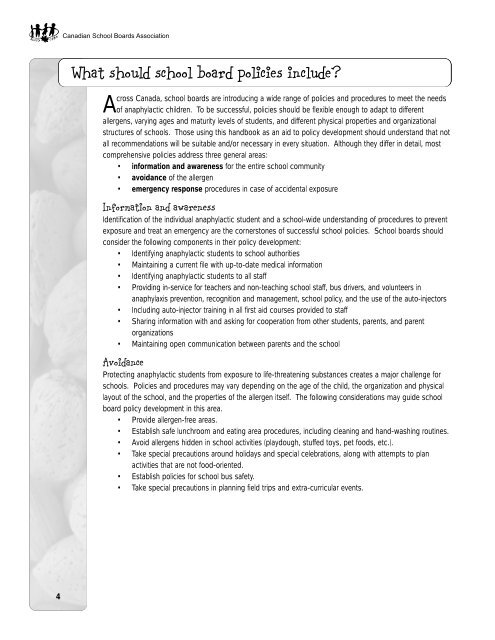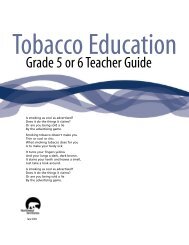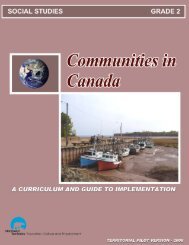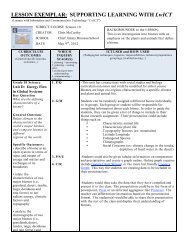Anaphylaxis: A Handbook for School Boards - Education, Culture ...
Anaphylaxis: A Handbook for School Boards - Education, Culture ...
Anaphylaxis: A Handbook for School Boards - Education, Culture ...
You also want an ePaper? Increase the reach of your titles
YUMPU automatically turns print PDFs into web optimized ePapers that Google loves.
Canadian <strong>School</strong> <strong>Boards</strong> AssociationWhat should school board policies include?Across Canada, school boards are introducing a wide range of policies and procedures to meet the needsof anaphylactic children. To be successful, policies should be flexible enough to adapt to differentallergens, varying ages and maturity levels of students, and different physical properties and organizationalstructures of schools. Those using this handbook as an aid to policy development should understand that notall recommendations will be suitable and/or necessary in every situation. Although they differ in detail, mostcomprehensive policies address three general areas:• in<strong>for</strong>mation and awareness <strong>for</strong> the entire school community• avoidance of the allergen• emergency response procedures in case of accidental exposureIn<strong>for</strong>mation and awarenessIdentification of the individual anaphylactic student and a school-wide understanding of procedures to preventexposure and treat an emergency are the cornerstones of successful school policies. <strong>School</strong> boards shouldconsider the following components in their policy development:• Identifying anaphylactic students to school authorities• Maintaining a current file with up-to-date medical in<strong>for</strong>mation• Identifying anaphylactic students to all staff• Providing in-service <strong>for</strong> teachers and non-teaching school staff, bus drivers, and volunteers inanaphylaxis prevention, recognition and management, school policy, and the use of the auto-injectors• Including auto-injector training in all first aid courses provided to staff• Sharing in<strong>for</strong>mation with and asking <strong>for</strong> cooperation from other students, parents, and parentorganizations• Maintaining open communication between parents and the schoolAvoidanceProtecting anaphylactic students from exposure to life-threatening substances creates a major challenge <strong>for</strong>schools. Policies and procedures may vary depending on the age of the child, the organization and physicallayout of the school, and the properties of the allergen itself. The following considerations may guide schoolboard policy development in this area.• Provide allergen-free areas.• Establish safe lunchroom and eating area procedures, including cleaning and hand-washing routines.• Avoid allergens hidden in school activities (playdough, stuffed toys, pet foods, etc.).• Take special precautions around holidays and special celebrations, along with attempts to planactivities that are not food-oriented.• Establish policies <strong>for</strong> school bus safety.• Take special precautions in planning field trips and extra-curricular events.4
















